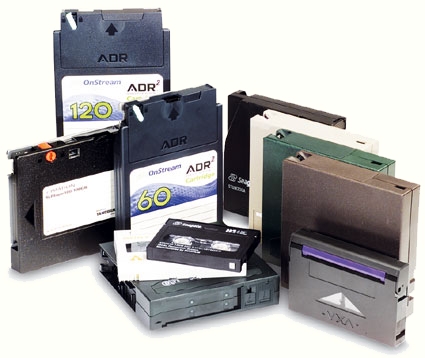Backing Up with Tape Drives: Security Is What Counts
Basics Of Tape Technologies
A great many different technologies are on the market for data backup on disk drives. Here is a summary of the most important.
One thing to watch for regardless of the technology used is the net capacity of each drive.
Users should make sure that two values are always included when capacity is specified for a drive: the capacity with and without compression. The capacity without compression is used below.
ADR
Advanced Digital Recording (ADR) was developed by Philips and is typified by variable speeds. ADR works with 192 tracks; the newer ADR2, used in the test candidates (Onstream ADR2 60Si), works with 384. The drive reads and writes eight tracks in parallel so that it can work at a lower tape speed. The speed matches the rate at which the data is supplied by the PC, thus keeping the drive from stopping and starting and repositioning itself every time the data rate decreases.
AIT
Like DDS, Advanced Intelligent Tape (AIT) from Sony works with Helical Scan Technology, i.e., slanted recording using a rotating drum. The tapes are similar in design to DDS, but bigger. AIT uses the particularly efficient ALDC (Advanced Lossless Data Compression). Its specialty is a 64 kBit memory chip (MIC, Memory-in-Cassette) built into the cartridge to accelerate data access. AIT-1 offers a capacity of up to 35 GBytes; AIT-2, up to 50 GBs; and AIT-3, up to 100 GB.
Get Tom's Hardware's best news and in-depth reviews, straight to your inbox.
DDS
DAT (Digital Audio Tape) drives save to DDS-4 (Digital Data Storage) tapes with a capacity of 20 GB; the maximum transfer rate is 2.75 MB/sec. Like video recorders, DDS uses Helical Scan Technology with a rotating drum on which two write and two read heads are arranged. The data tracks are recorded at an angle and are 6.8 µm wide. As usual on hard drives, DDS uses PRML technology (Partial Response Maximum Likelihood) with 8/ 10 bit error correction for its signal conditioning. As individual bits can no longer be separately read because of the overlap, the signal curve composed of several bits is compared with patterns to determine the bit sequence.
